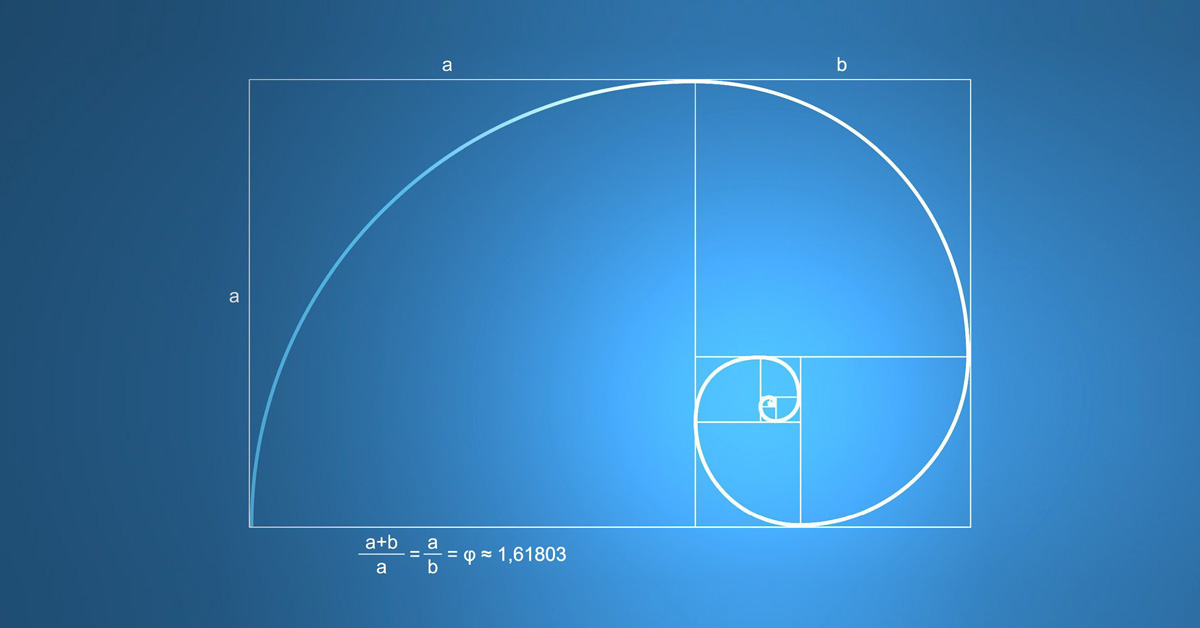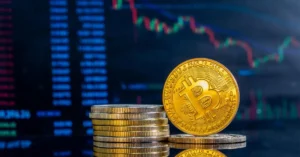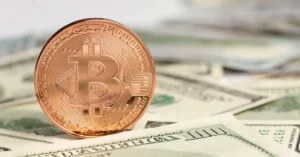Bitcoin is a cryptocurrency-based blockchain protocol that relies very heavily on mathematics. Computer code itself is math, the cryptocurrency focuses on math to form its supply issuance structure, and math is the basis of each hard-coded halving that reduces that supply even further, causing the bubble-effect in price action the asset has become known for.
Math has a much bigger role in markets, and we’ll explain why. Math and its application in markets has many uses, such as statistics that allow moving averages to appear on price charts, and geometrical shapes that can help traders and investors predict future outcomes, all the way down to the target.
But perhaps the most interesting aspect of math, is hidden within the Fibonacci sequence, and more directly, the golden ratio which is tied to the sequence itself. To celebrate Fibonacci Day on 11/23, this guide will introduce you to the wild world of Fibonacci, who the mysterious mathematician was, and how his discovery still has a large, yet unexplained impact in markets today.
Who Is Fibonacci? Fibonacci Sequence Explained
Leonardo Bigollo Pisano, better known to the world as Fibonacci, was an Italian mathematician born in the Republic of Pisa. Fibonacci was responsible for popularizing the Hindu-Arabic numerical system in the Western World. He introduced the Fibonacci sequence in the Book of Calculation (Liber Abaci).
Liber Abaci posed a problem involving the growth of the population of rabbits and solved it using the Fibonacci sequence. The Fibonacci sequence starts with 0, 1, 1, 2, 3, 5, 8, 13, 21, … and increases infinitely. Each next number in the sequence is the sum of the previous pair. For example, 1 + 2 = 3, or 2 + 3 = 5, and so on.
Bizarre Relationships Between Fibonacci Numbers
There are also some fascinating relationships within the sequence. For example, every 4th number is a multiple of 3 (i.e., 3, 21, …), every 5th number is a multiple of 5 (i.e., 5, 55, …), and every 6th number is a multiple of 8 (i.e., 8, 144, …). Each of those numbers are also numbers in the Fibonacci sequence.
Interestingly, once past 5 or 8 in the sequence, the distance between each next closest number becomes closer and closer to the golden ratio of 1.618. For example, multiply the number 8 by 1.618, and you’ll get roughly the next closest number in the Fibonacci sequence. Multiply that number by 1.618 again, and the sequence will keep going. Multiplying each number by 0.618 – a closely related Fibonacci ratio – reduces the sequence to the next lowest number instead. Essentially, Fibonacci found the formula for growth, which is why it can help to predict price growth in financial markets.
Meet Phi: The Golden Ratio Is Found Everywhere
There are almost an endless amount of unusual facts and relationships with other numbers and geometry. At the fortieth number in the sequence, the ratio will match “phi” to the 15th decimal place, resulting in 1.618033988749895. Phi is closely related to the more commonly known number, pi. The golden ratio of 1.618 is also called the divine ratio or the divine proportion. The ratio itself is found all over nature and used in both music and art. Humans find the golden ratio pleasing to the eye and ear.
Fibonacci numbers might also have a mystical meaning, found strangely governing the harmonics related to solar system planetary cycles. For example, the Earth takes roughly 365 days to orbit the sun, while Venus takes roughly 224 days to orbit the sun. This creates a ratio of 8 to 13 – which are both Fibonacci numbers, or a ratio of roughly 1.618.
The average mean orbital distance between each successive planet in relation to the one before it, is nearly 1.618 exactly, behaving just like the Fibonacci sequence itself. According to GoldenNumber.net, a 2003 study of NASA data revealed that the universe is finite and shaped like a dodecahedron. A dodecahedron is a three-dimensional polygon with 12 sides, each forming a pentagon on each flat surface. The pentagon itself consists of several instances of the golden ratio.
Fibonacci In Financial Markets: How To Use Retracements And Extensions
Fibonacci ratios also appear very regularly in financial markets, both in terms of time and price. Things like time-based Fibonacci ratios can predict when certain pivot points might occur, while Fibonacci retracement levels and extensions can help predict where prices might reverse or where a significant reaction might occur.
Fibonacci tools also come in a variety of shapes and sizes, with Fib circles, Fib spirals, Fib wedges, Fib speed resistance fans, Fibonacci channels, and much more. Drawing Fibonacci retracement levels on price charts can help show where support and resistance levels fall. Doing so is done by taking the tool and drawing it across a swing high and swing low.
Notable levels are commonly found at 0.618, 1.618, but also at 0.786, 0.382, 0.236, 0.5, and many other versions of Fibonacci ratios.
The Bitcoin Bull Run And The Golden Ratio
To find proof of Fibonacci and the golden ratio working in plain sight, look no further than the Bitcoin price chart. During each Bitcoin market cycle, the 0.618 Fib retracement level was consistently an important level than once reclaimed, resulted in a bull market. After the mid-cycle peak, Bitcoin price retraced exactly to the golden ratio of 1.618, held, and then rocketed off to the peak of each cycle. Each bull market peak was also a factor of a Fibonacci number. Is this time different, or will the golden ratio hold again, and Bitcoin tops out at yet another factor of Fibonacci that is possibly predictable using Fibonacci-based tools?
Fibonacci retracement and extensions, as well as an assortment of technical analysis drawing tools based on Fibonacci are available via PrimeXBT’s built-in charting software from TradingView. PrimeXBT is an award-winning Bitcoin trading platform offering synthetic contracts on crypto, forex, stock indices, commodities, and much more, all from a single account.
ⓘ As part of our ongoing support for startups and SMEs, LAFFAZ Media publishes feature and resource articles that may include references and links to external websites. These inclusions are selected at our editorial discretion to provide valuable information or suggestions to our readers. LAFFAZ Media does not control, endorse, or assume responsibility for the content or practices of external websites. For more details, please refer to our Terms and Conditions.






